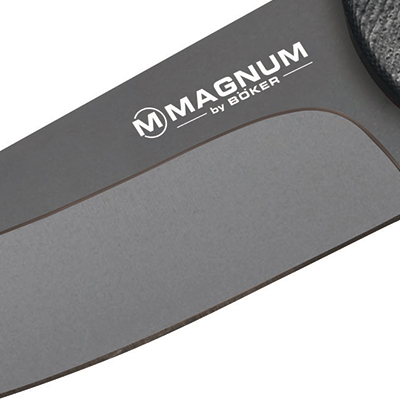Blade Coating

Coating a blade increases its lifespan. Knife blades are coated with various materials using different methods.
A coating is a firmly bonded layer consisting of a shapeless substance that is applied to the surface of an object. An object is coated for the purpose of altering the chemical, physical or electrical properties of the material. Coating methods are a separate group of production processes, defined in DIN 8580. Depending on the coating method and intended purpose of the coated object, the coating can be thick or thin and consist of one or multiple layers. There are several ways of applying coating layers to an object – mechanical, chemical, thermal and thermo-mechanical. Coating materials (or coating substances) can be almost any gaseous, liquid, dissolved or solid substances. However, not every material is suitable for every surface. Metal objects like knife blades must be prepared with a mechanical or chemical treatment to ensure that the layer is applied evenly, bonds permanently and holds up to environmental influences.
The most common preparation method for metal objects is sanding. Modern methods include micro-blasting, CCVD and silanization. The coating material is usually applied by spraying, vapor deposition or immersion in a galvanic bath. This process is often followed with a heat treatment to cure the coating and achieve a permanent bond between the coating layer and the surface of the object. This protects it against abrasion.
Knife blades can be coated too. Most blade coatings are applied to protect the blade from environmental conditions, abrasion or damage and to increase its lifespan. However, coatings might also be chosen for aesthetic reasons – to give the blade a matt, polished or black look.
